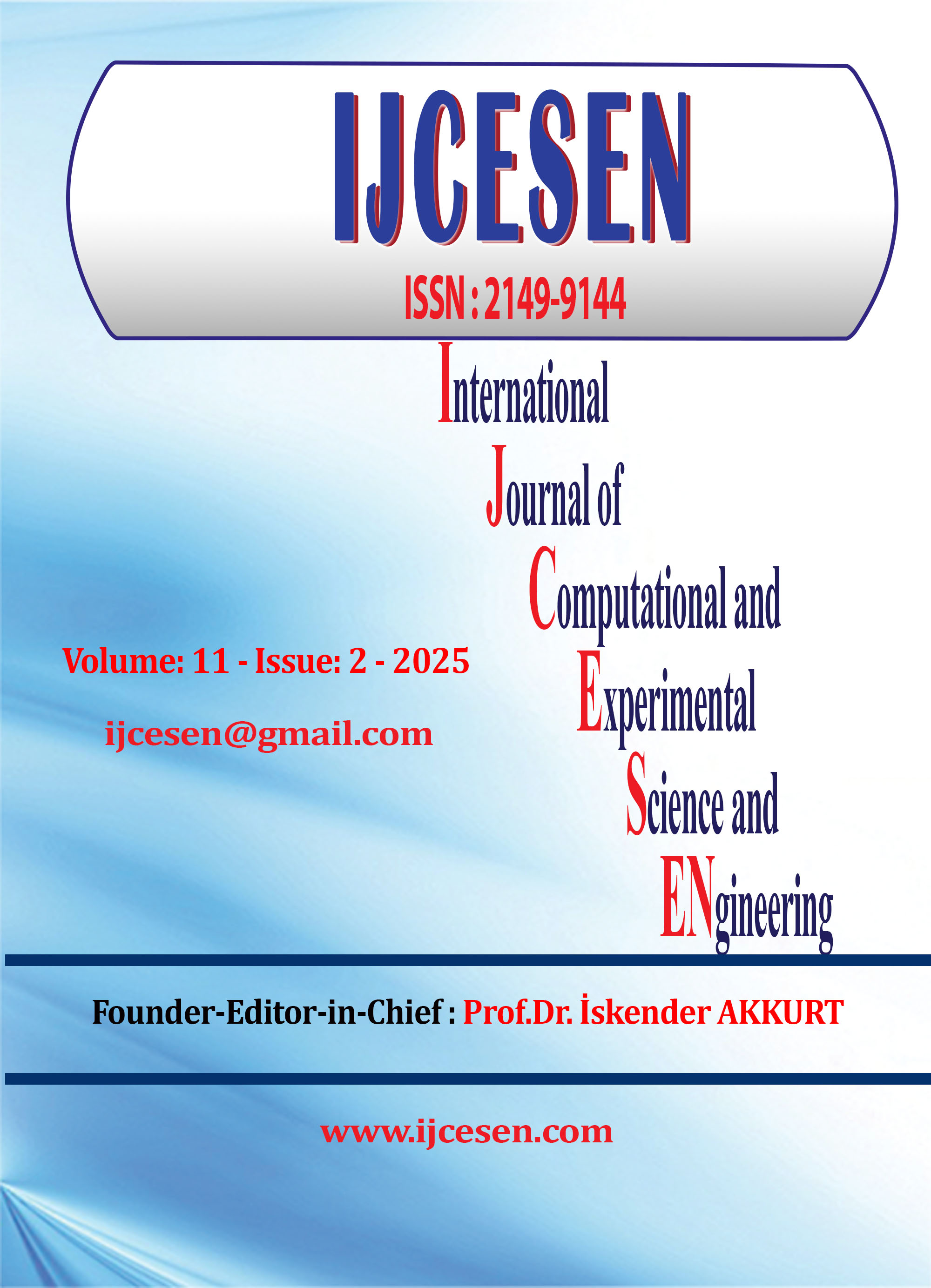Deep Learning Fusion for Student Academic Prediction Using ARLMN Ensemble Model
DOI:
https://doi.org/10.22399/ijcesen.734Keywords:
Education, Academic Prediction, Student Success, Recurrent Neural Network, Long Short-Term MemoryAbstract
The realization of accurate student performance prognostication within the educational domain presents a critical capability for the timely implementation of intervention strategies and supplementary support mechanisms. This research proposes the Adaptive Recurrent Logistic Memory Network (ARLMN), an innovative approach for student academic prediction. The ARLMN combines Recurrent Neural Network (RNN), Long Short-Term Memory (LSTM) network, and Sigmoid Plus - Adaptive Activation Function(S-AAF). The integrated system achieves an impressive accuracy of approximately 98%. By incorporating these methodologies, this model captures temporal dependencies and patterns in student data, including academic, demographic, and emotional information. Pre-processing involves standardizing features before feeding them into the RNN and LSTM models, which are then combined using S-AAF classifier for robust predictions. Experimental results demonstrate the effectiveness of this approach, achieving high accuracy in forecasting student academic performance. By identifying factors that impact performance, this model empowers educators to proactively intervene and ensure student success.
References
P. Gou, (2023). Teaching English using mobile applications to improve academic performance and language proficiency of college students, Educ. Inf. Technol., pp. 1–15, doi: 10.1007/s10639-023-11864-9.
Heissel, J. A., Levy, D. J., & Adam, E. K. (2017). Stress, sleep, and performance on standardized tests: Understudied pathways to the achievement gap. AERA Open, 3(3), 2332858417713488.
Schumacher, C., &Ifenthaler, D. (2018). Features students really expect from learning analytics. Computers in Human Behavior, 78, 397–407.
Sievertsen, H. H., Gino, F., &Piovesan, M. (2016). Cognitive fatigue infuences students’ performance on standardized tests. Proceedings of the National Academy of Sciences, 113(10), 2621–2624.
B.-H. Kim, E. Vizitei, and V. Ganapathi, (2018). GritNet: Student performance prediction with deep learning, arXiv:1804.07405.
L. Zhang, X. Xiong, S. Zhao, A. Botelho, and N. T. Heffernan, ‘‘Incorporating rich features into deep knowledge tracing,’’ in Proc. 4th ACM Conf. Learn. Scale, Apr. 2017, pp. 169–172, doi: 10.1145/3051457.3053976.
Ahmed M, Najmul Islam AKM (2019) Deep learning: hope or hype. Ann Data Sci 7(3):427–432. https://doi.org/10.1007/s40745-019-00237-0.
Member S (2010) Educational data mining: a review of the state of the Art. IEEE Trans Syst Man Cybern C 40(6):601–618
S.U. Hassan, H. Waheed, N.R. Aljohani, M. Ali, S. Ventura, F. Herrera, (2019). Virtual learning environment to predict withdrawal by leveraging deep learning, Int. J. Intell. Syst. 34 (8);1935–1952, https://doi.org/10.1002/int.22129.
M. Wasif, H. Waheed, N.R. Aljohani, S.-U. Hassan, (2019). Understanding Student Learning Behavior and Predicting Their Performance, pp. 1–28, https://doi. org/10.4018/978-1-5225-9031-6.ch001.
Tomasevic, N., Gvozdenovic, N., &Vranes, S. (2020). An overview and comparison of supervised data mining techniques for student exam performance prediction. Computers & Education, 143, 103676.
Okubo, F., Yamashita, T., Shimada, A., & Ogata, H. (2017). A neural network approach for students’ performance prediction. In Proceedings of the Seventh International Learning Analytics & Knowledge Conference (LAK ’17). Association for Computing Machinery, New York, NY, USA (pp. 598– 599). https://doi.org/10.1145/3027385.3029479.
Y. He, et al., (2020) Online at-risk student identification using RNN-GRU joint neural networks, OR Inf. 11 (10);1–11, https://doi.org/10.3390/info11100474.
M. Adnan, et al., (2021). Predicting at-risk students at different percentages of course length for early intervention using machine learning models, IEEE Access 9;7519–7539.
Su, Y., Liu, Q., Liu, Q., Huang, Z., Yin, Y., Chen, E., & Hu, G. (2018). Exercise-enhanced sequential modeling for student performance prediction. In Proceedings of the AAAI Conference on Artifcial Intelligence (Vol. 32, No. 1). https://doi.org/10.1609/aaai.v32i1.11864.
Kukkar, A., Mohana, R., Nayyar, A., Kim, J., Kang, B. G., &Chilamkurti, N. (2019). A novel deeplearning-based bug severity classifcation technique using convolutional neural networks and random forest with boosting. Sensors, 19(13), 2964
P. Padma, & G. Siva Nageswara Rao. (2024). CBDC-Net: Recurrent Bidirectional LSTM Neural Networks Based Cyberbullying Detection with Synonym-Level N-Gram and TSR-SCSOFeatures. International Journal of Computational and Experimental Science and Engineering, 10(4). https://doi.org/10.22399/ijcesen.623
Sunandha Rajagopal, & N. Thangarasu. (2024). The Impact of Clinical Parameters on LSTM-based Blood Glucose Estimate in Type 1 Diabetes . International Journal of Computational and Experimental Science and Engineering, 10(4). https://doi.org/10.22399/ijcesen.656
Rajani Kumari Inapagolla, & K . Kalyan Babu. (2025). Audio Fingerprinting to Achieve Greater Accuracy and Maximum Speed with Multi-Model CNN-RNN-LSTM in Speaker Identification: Speed with Multi-Model CNN-RNN-LSTM in Speaker Identification. International Journal of Computational and Experimental Science and Engineering, 11(1). https://doi.org/10.22399/ijcesen.1138
Olola, T. M., & Olatunde, T. I. (2025). Artificial Intelligence in Financial and Supply Chain Optimization: Predictive Analytics for Business Growth and Market Stability in The USA. International Journal of Applied Sciences and Radiation Research, 2(1). https://doi.org/10.22399/ijasrar.18
Downloads
Published
How to Cite
Issue
Section
License
Copyright (c) 2025 International Journal of Computational and Experimental Science and Engineering

This work is licensed under a Creative Commons Attribution 4.0 International License.





